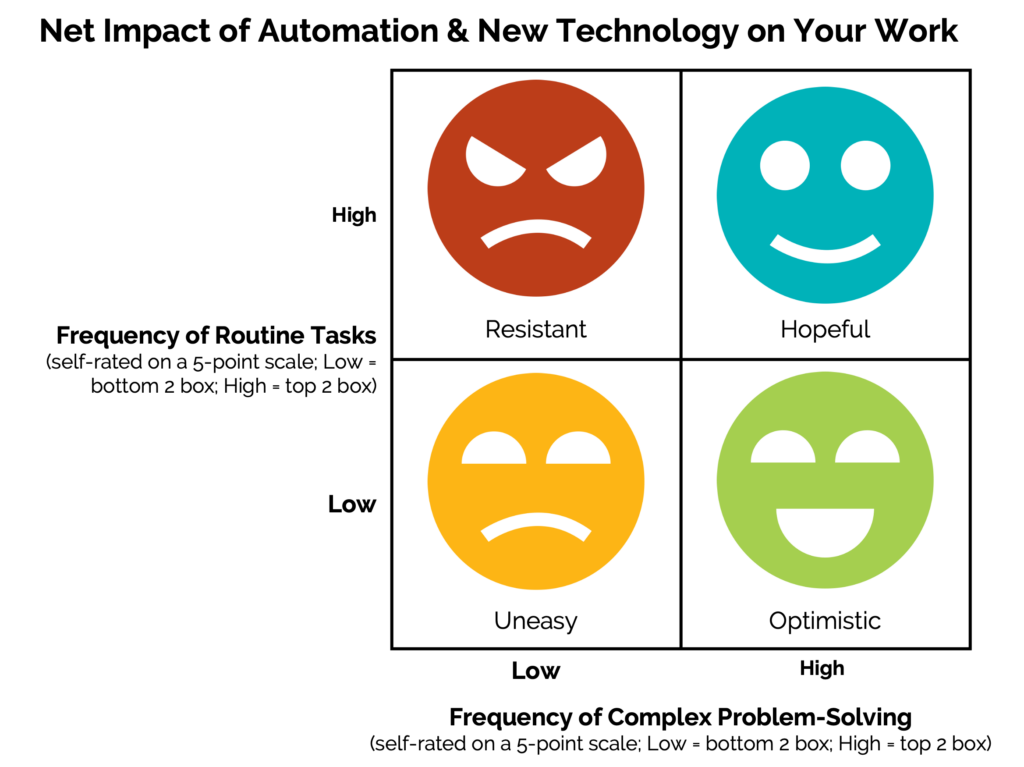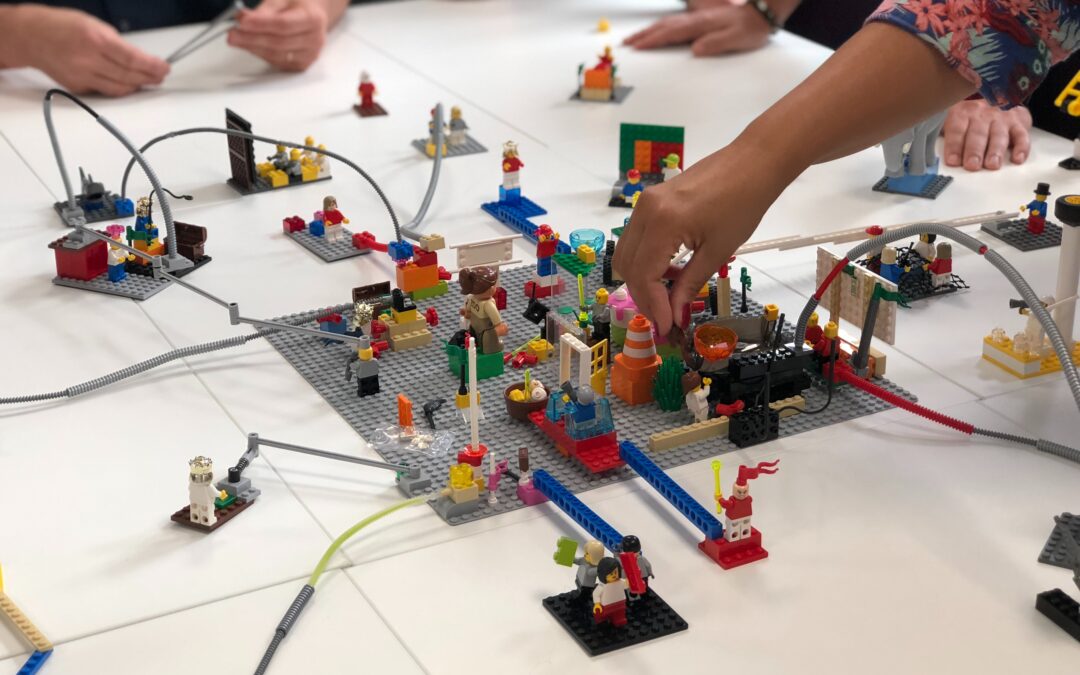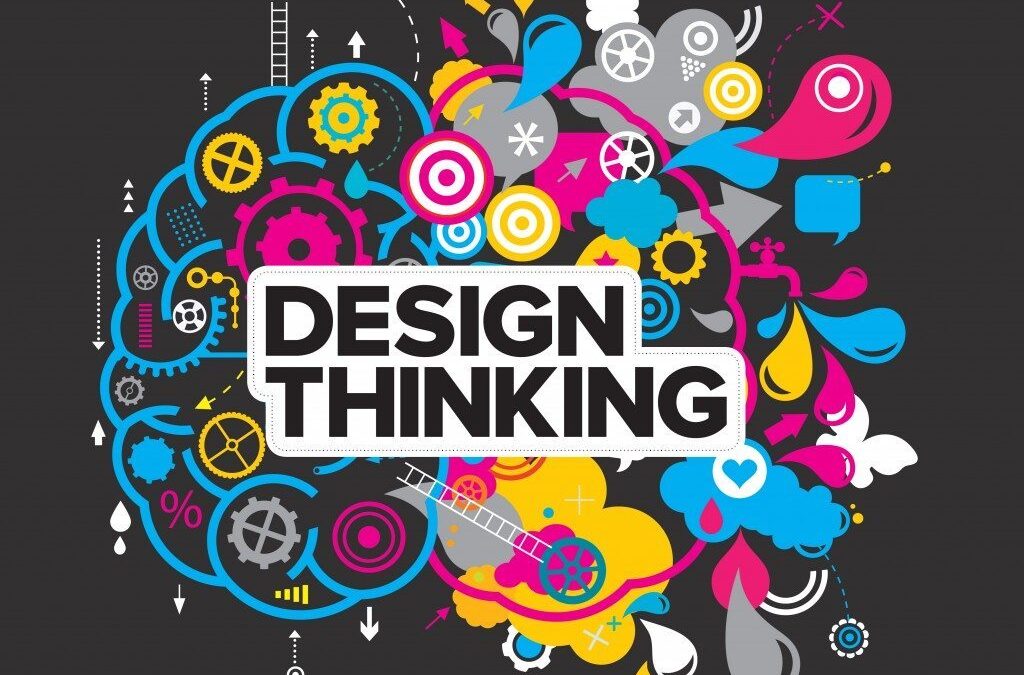
by Robyn Bolton | Mar 4, 2025 | Automation & Tech, Leadership
Imagine a manufacturing company. On the factory floor, machines whirl and grind, torches flare up as welding helmets click closed, and parts and products fall off the line and into waiting hands or boxes, ready to be shipped to customers. Elsewhere, through several doors and a long hallway, you leave the cacophony of the shop floor for the quiet hum of the office. Computers ping with new emails while fingers clickety-clack across the keyboard. Occasionally, a printer whirs to life while forcing someone to raise their voice as they talk to a customer on the other end of the phone.
Now, imagine that you ask each person whether AI and automation will positively or negatively affect their jobs. Who will champion new technology and who will resist it?
Most people expect automation acceptance to be separated by the long hallway, with the office workers welcoming while the factory workers resist.
Most people are wrong.
The Business Case for Problem-Solving Job Design
Last week, I wrote about findings from an MIT study that indicated that trust, not technology, is the leading indicator of whether workers will adopt new AI and automation tools.
But there’s more to the story than that. Researchers found that the type of work people do has a bigger influence on automation perception than where they do it. Specifically, people who engage in work requiring high levels of complex problem-solving alongside routine work are more likely to see the benefit of automation than any other group.
Or, to put it more simply

While it’s not surprising that people who perform mostly routine tasks are more resistant than those who engage in complex tasks, it is surprising that this holds true for both office-based and production-floor employees.
Even more notable, this positive perception is significantly higher for complex problem solvers vs. the average across all workers::
- Safety: 43% and 41% net positive for office and physical workers, respectively (vs. 32% avg)
- Pay: 27% and 25% net positive for physical and office workers, respectively (vs. 3.9% avg)
- Autonomy: 33% net positive for office workers (vs. 18% average)
- Job security: 25% and 22% net positive for office and physical workers, respectively (vs. 3.5%)
Or, to put it more simply, blend problem-solving into routine-heavy roles, and you’ll transform potential technology resistors into champions.
3 Ways to Build Problem-Solving Into Any Role
The importance of incorporating problem-solving into every job isn’t just a theory – it’s one of the core principles of the Toyota Production System (TPS). Jidoka, or the union of automation with human intelligence, is best exemplified by the andon cord system, where employees can stop manufacturing if they perceive a quality issue.
But you don’t need to be a Six-Sigma black belt to build human intelligence into each role:
- Create troubleshooting teams with decision authority
Workers who actively diagnose and fix process issues develop a nuanced understanding of where technology helps versus hinders. Cross-functional troubleshooting creates the perfect conditions for technology champions to emerge.
- Design financial incentives around problem resolution
The MIT study’s embedded experiment showed that financial incentives significantly improved workers’ perception of new technologies while opportunities for input alone did not. When workers see personal benefit in solving problems with technology, adoption accelerates.
- Establish learning pathways connected to problem complexity
Workers motivated by career growth (+33.9% positive view on automation’s impact on upward mobility) actively seek out technologies that help them tackle increasingly complex problems. Create visible advancement paths tied to problem-solving mastery.
Innovation’s Human Catalyst
The most powerful lever for technology adoption isn’t better technology—it’s better job design. By restructuring roles to include meaningful problem-solving, you transform the innovation equation.
So here’s the million-dollar question every executive should be asking: Are you designing jobs that create automation champions, or are you merely automating jobs as they currently exist?

by Robyn Bolton | Feb 18, 2025 | Innovation, Leadership, Metrics, Tips, Tricks, & Tools
Innovation is undergoing a metamorphosis, and while it may seem like the current goo-stage is the hard part (it’s certainly not easy!), our greatest challenge is still ahead. Because while we may emerge as beautiful butterflies, we still need to get buy-in for change from a colony of skeptical caterpillars who’ve grown weary of transformation talk.
The Old Playbook Is Dead, Too
Picture this: A butterfly lands, armed with PowerPoint slides about “The Future of Leaf-Eating” and projections showing “10x Nectar Collection Potential.” The caterpillars stare blankly, having seen this show before.
The old approach – big presentations, executive sponsorship, and promises of massive returns within 24 months – isn’t just ineffective. It’s harmful. Each failed transformation makes the next one harder, turning your caterpillars more cynical and more determined to cling to their leaves.
The Secret Most Change Experts Miss
Butterflies don’t convince caterpillars to transform by showing off their wings. They create conditions where transformation feels possible, necessary, and safe. Your job isn’t to sell the end state – it’s to help others see their own potential for change.
Here’s how:
Start With the Hungriest Caterpillars
Find those who feel the limitations of their current state most acutely. They’re not satisfied with their current leaf, and they’re curious about what lies beyond. These early adopters become your first chrysalis cohort.
Make it About Their Problems, Not Your Vision
Instead of talking about transformation, focus on specific pain points. “Wouldn’t it be easier to reach that juicy leaf if you could fly?” is more compelling than “Flying represents a paradigm shift in leaf acquisition strategy.”
Build a Network of Proof
Every successful mini-transformation creates evidence that change is possible. When one caterpillar successfully navigates their chrysalis phase, others pay attention. Let your transformed allies tell their stories.
Set Realistic Expectations
Metamorphosis takes time and isn’t always pretty. Be honest about the goo phase – that messy middle where things fall apart before they come together. This builds trust and prepares people for the real journey, not the sanitized version.
Where to Start
- Identify your first chrysalis cohort – the people already feeling the limits of their current state
- Focus on solving immediate problems that showcase the benefits of change
- Document and share small victories, letting others tell their transformation stories
- Create realistic timelines that acknowledge both quick wins and longer-term metamorphosis
What’s your experience? Have you successfully guided a transformation without relying on buzzwords and fancy presentations? Drop your stories in the comments.
After all, we’re all just caterpillars and butterflies helping each other find our wings.

by Robyn Bolton | Jul 29, 2020 | Customer Centricity, Innovation, Strategy
Over the past several weeks, I’ve kicked off innovation projects with multiple clients. As usual, my clients are deeply engaged and enthusiastic, eager to learn how to finally break through the barriers their organizations erect and turn their ideas into real initiatives that generate real results.
Things were progressing smoothly during the first kick-off until a client asked, “Who’s my customer?”
I was shocked. Dumbfounded. Speechless. To me, someone who “grew up” in P&G’s famed brand management function and who has made career out of customer-driven innovation, this was the equivalent of asking, “why should I wear clothes?” The answer is so obvious that the question shouldn’t need to be asked.
Taking a deep breath, I answered the question and we moved on.
A few days later, the question was asked again. By a different client. In a different company. A few days later, it was asked a third time. By yet a different client. In yet a different company. In a completely different industry!
What was going on?!?!?
Each time I gave an answer specific to the problem we were working to solve. When pressed, I tried to give a general definition for “customer” but found that I spent more time talking about exceptions and additions to the definition rather than giving a concise, concrete, and usable answer.
That’s when it struck me – Being “customer-driven” isn’t enough. To be successful, especially in innovation, you need to focus on serving everyone involved in your solution. You need to be “stakeholder-driven.”
What is a customer?
According to Merriam-Webster, a customer is “one that purchases a commodity or service.”
Makes perfect sense. At P&G, we referred to retailers like WalMart and Kroger as “customers” because they purchased P&G’s products from the company. These retailers then sold P&G’s goods to “consumers” who used the products.
But P&G didn’t focus solely on serving its customers. Nor did it focus solely on serving its consumers. It focused on serving both because to serve only one would mean disaster for the long-term business. It focused on its stakeholders.
What is a stakeholder?
Setting aside Merriam-Webster’s first definition (which is specific to betting), the definitions of a stakeholder are “one that has a stake in an enterprise” and “one who is involved in or affected by a course of action.”
For P&G, both customers (retailers) and consumers (people) are stakeholders because they are “involved in or affected by” P&G’s actions. Additionally, shareholders and employees are stakeholders because they have a “stake in (the) enterprise.”
As a result, P&G is actually a “stakeholder-driven” company in which, as former CEO AG Lafley said in 2008, the “consumer is boss.”
How to be a stakeholder-driven organization
Focusing solely on customers is a dangerous game because it means that other stakeholders who are critical to your organization’s success may not get their needs met and, as a result, may stop supporting your work.
Instead, you need to understand, prioritize, and serve all of your stakeholders
Here’s how to do that:
- Identify ALL of your stakeholders. Think broadly, considering ALL the people inside and outside your organization who have a stake or are involved or affected by your work.
- Inside your organization: Who are the people who need to approve your work? Who will fund it? Who influences these decisions? Who will be involved in bringing your solution to life? Who will use it? Who could act as a barrier to any or all of these things?
- Outside your organization: Who will pay for your solution? Who will use your solution? Who influences these decisions? Who could act as a barrier?
- Talk to your stakeholders and understand what motivates them. For each of the people you identify by asking the above questions, take time to actually go talk to them – don’t email them, don’t send a survey, actually go have a conversation – and seek to understand they’re point of view. What are the biggest challenges they are facing? Why is this challenging? What is preventing them from solving it? What motivates them, including incentives and metrics they need to deliver against? What would get them to embrace a solution? What would cause them to reject a solution?
- Map points of agreement and difference amongst your stakeholder. Take a step back and consider all the insights from all of your stakeholders. What are the common views, priorities, incentives, or barriers? What are the disagreements or points of tension? For example, do your buyers prioritize paying a low price over delivering best-in-class performance while your users prioritize performance over price? Are there priorities or barriers that, even though they’re unique to a single stakeholder, you must address?
- Prioritize your stakeholder by answering, “Who’s the boss?” Just as AG Lafley put a clear stake in the ground when he declared that, amongst all of P&G’s stakeholders, that the consumer was boss, challenge yourself to identify the “boss” for your work. For medical device companies, perhaps “the boss” is the surgeon who uses the device and the hospital executive who has the power to approve the purchase. For a non-profit, perhaps it’s the donors who contribute a majority of the operating budget. For an intrapreneur working to improve an internal process, perhaps it’s the person who is responsible for managing the process once it’s implemented. To be clear, you don’t focus on “the boss” to the exclusion of the other stakeholders but you do prioritize serving the boss.
- Create an action plan for each stakeholder. Once you’ve spent time mapping, understanding, and prioritizing the full landscape of your stakeholder’s problems, priorities, and challenges, create a plan to address each one. Some plans may focus on the design, features, functions, manufacturing, and other elements of your solution. Some plans may focus on the timing and content of proactive communication. And some plans may simply outline how to respond to questions or a negative incident.
Yes, it’s important to understand and serve your customers. But doing so is insufficient for long-term success. Identifying, understanding, and serving all of your stakeholders is required for long-term sustainability.
Next time you start a project, don’t just ask “Who is my customer?” as “Who are my stakeholders?” The answers my surprise you. Putting those answers into action through the solutions you create and the results they produce will delight you.
Originally published on March 23, 2020 on Forbes.com

by Robyn Bolton | Jun 3, 2020 | Innovation, Tips, Tricks, & Tools
Last week, I published a post with a very simple goal – define innovation so we can stop debating what it means and start doing it.
The response was amazing. So, I figured that this week I would tackle another buzzword – Design thinking.
We’ve all heard it and we’ve probably all said it but, like “innovation’ we probably all have a different definition for it. In fact, in the last few months alone I’ve heard it used as a synonym for brainstorming, for customer interviews, and for sketching while talking. Those things are all part of Design thinking but they aren’t the entirety of Design thinking.
What I tell my clients
When a client asks if we’re “doing Design thinking,” here’s what I say;
“Yes, because Design thinking is a way of solving problems that puts customers and stakeholders, not your organization, at the center of the process and seeks to produce solutions that create, capture, and deliver value to your customers, stakeholders, and your company.”
The Basics
- What: One could consider the official definition of Design thinking to come from Tim Brown, Executive Char of IDEO, who stated that “Design Thinking is a human-centered approach to innovation that draws from the designer’s toolkit to integrate the needs of people, the possibilities of technology, and the requirements for business success”
- Why: Useful in solving “wicked problems,” problems that are ill-defined or tricky and for which pre-existing rules and domain knowledge will be of limited or no help (or potentially detrimental)
- How:
- Inspiration: Understand the problem by building empathy with stakeholders (deeply understand their functional, emotional, and social Jobs to be Done) and document that understanding in a brief that outlines goals (ideal end state), bounds (elements to be avoided), and benchmarks against which progress can be measured
- Ideation: Generate ideas using brainstorming to develop a vast quantity of ideas (divergent thinking) and then home in on the ideas at the intersection of desirability, feasibility, and viability that best fit the brief (convergent thinking)
- Implementation: Prototype ideas so that they can be tested, evaluated, iterated, and refined in partnership with customers and stakeholders, ensuring that humans remain at the center of the process.
- When: At the start of any R&D or development process
- Traditionally, design was involved only in the late stages of development work, primarily to improve a solution’s functionality or aesthetic. Design Thinking’s ability to pull the designer mindset into the earliest phases of development is, perhaps, one of the biggest impacts it has made on business and technical fields
- Where: Can be done anywhere BUT, because it is a human-centered approach, it must involve multiple human beings through the process
- Who: Anyone who is willing to adopt a “beginner’s mind,” an attitude of openness to new possibilities, curiosity about the problem and the people with it, and humility to be surprised and even wrong
Important Points & Fun Facts
- Design Thinking IS a human-centered design approach. This means that it seeks to develop solutions to problems by involving the human perspective at every single step of the process
- Design thinking is NOT synonymous with user-centered design though user-centered design could be considered a subset of Design Thinking because it gives attention to usability goals and the user experience
- Design Thinking was NOT invented by IDEO, but I would argue that they have done more to popularize it and bring it into the mainstream, especially into business management practices, than any other person or firm.
- Design Thinking IS the product of 50+ years of academic and practical study and application. Here’s some fun facts:
- 1935: The practice of Design thinking was first established by John Dewey as the melding of aesthetics and engineering principles
- 1959: The term “Design thinking” was coined by John E. Arnold in his book Creative Engineering
- 1991: the first symposium on Design Thinking was held at Delft University in the Netherlands
- 2000s: Design thinking is widely adopted as an innovation approach thanks to books by Richard Florida (2002), Daniel Pink (2006), Roger Martin (2007), Tim Brown (2009), and Thomas Lockwood (2010)
- 2005: Stanford’s d.school begins teaching Design thinking as a general approach to innovation
- Design Thinking is NOT just for radical/breakthrough/disruptive innovation
- Design Thinking IS useful for all types of innovation (something different that creates value) resulting from wicked problems. In fact, as far back as 1959, John E. Arnold identified four types of innovation that could benefit from a Design thinking approach:
- Novel functionality, i.e. solutions that satisfy a novel need or solutions that satisfy an old need in an entirely new way
- Higher performance levels of a solution
- Lower production costs
- Increased salability
If you want to learn more…
As noted above, there are lots of resources available to those who are deeply curious about Design thinking. I recommend starting with Tim Brown’s 2008 HBR article, Design Thinking, and then diving into IDEO’s extremely helpful and beautifully designed website dedicated entirely to Design thinking.
Here’s what I’d like to learn…
- Was this helpful in clarifying what Design Thinking is?
- What, if anything, surprised you?
- What else would you like to know?
Drop your thoughts in the comments or shoot me an email at robyn@milezero.io

by Robyn Bolton | May 27, 2020 | Innovation
When I worked on P&G’s WalMart sales team, one of my bosses was a big guy with an even bigger personality. He shared his opinions loudly and broadly and one of his opinions was that we needed to stop using the word “breakthrough.”
“If I have to hear one more time about some new ‘breakthrough’ soap, I will throw you out of this office myself!” he would bellow.
Years later, I can’t help but wonder what he would think of the word “innovation.”
In May 2012, The Wall Street Journal published an article positing that, as the word “innovation” increased in usage, it decreased in meaning. The accompanying infographic said it all:
- 33,528: Times “innovation” was mentioned in quarterly and annual reports in the previous year
- 255: Books published in the last 90 days with “innovation” in the title
- 43%: Executive who say that their company has a Chief Innovation Officer or similar role
- 28%: Business schools with “innovation,” “innovate,” or “innovative” in their mission statements
That may seem like a lot but, remember, that data is nearly 8 YEARS OLD!
The desire for and investment in Innovation in all its forms – accelerators, incubators, startup/venture studios, corporate venture capital teams – has only grown since 2012.
While this may seem like a good thing, the fact that the success rate of innovations hasn’t changed, means that most people react to “innovation” the same way my boss reacted to “breakthrough” – if you bring it up, they throw you out.
To avoid getting thrown out of offices, one of the first thing I do with my clients when we begin working to build innovation into an enduring capability within their companies, is re-establish what innovation is and is not.
Innovation IS something different that creates value.
When people hear the term “innovation,” they tend to think of new-to-the-world gadgets that fundamentally change how we live our lives. Yes AND it’s many other things, too. Let’s break down the definition:
- “Something” includes products and technology, it also includes services, processes, revenue models, and loads of other things. Consider this, many would argue, quite convincingly, that the Toyota Production System was one of the biggest innovations of the 20th century
- “Different” often surprises people. After all, even Merriam Webster defines innovation as “something new.” But here’s the thing, one of the most commonly cited innovations, the iPhone, wasn’t “new.” Even Steve Jobs admitted it when he said, in his keynote speech, that Apple was introducing three products – a widescreen iPod with touch controls, a mobile phone, and an internet connected device. The iPhone was, however, different because it combined those three devices into one.
- “Creates value” is probably the most important part of the definition. All innovations solve problems. Solving problems creates value. If you solve a big problem, either because it’s a problem lots of people have or it’s a very painful problem a few people have or something in-between, you create a lot of value for others and for yourself.
Innovation IS NOT a one-size-fits-all term.
Think of it this way, both a Kia and a Maserati are cars, but you wouldn’t expect to pay Kia’s price tag and get a Maserati (and vice versa). Similarly, both a convertible and a pick-up truck are automobiles, but you wouldn’t use your convertible to carry building equipment to a construction site.
With a definition as broad as the one above, it’s possible for “innovation’ to become even more meaningless as it gets applied to more things. That’s why it’s important to identify different types of innovation.
There’s no universally accepted set of innovation types, which is why I recommend companies consider defining at least three types that reflect their business and forward-looking strategies.
One of the most common set of innovation categories is based on the degree of change required for implementation:
- Core Innovation requires minimal or no change to the current business model (customers, offerings, revenue model, resources and processes). Also known as Continuous or Incremental Innovation, this is the unglamorous but deeply important work of constantly improving what you do and how you do it.
- Adjacent Innovation changes a significant change to at least one element of your business model. It could be changing who you serve, like expanding from interventional cardiologists to general cardiologists, what you offer, like P&G’s expansion into “durable goods” when it launched Swiffer, or how you offer or deliver it.
- Radical innovation is the stuff that gets all the press. These innovations fundamentally change the business, like IBM moving from computers to business services. These innovations are high-risk and require a lot of time, money, and patience to see to fruition. This type of innovation is also called “Breakthrough” but, for obvious reasons, I shy away from that term.
There are many things that need to be done to shift innovation from buzzword to business capability. Defining innovation AND at least three different types is only the first step in moving from innovation theory and theater to building innovation into a true capability that drives sustainable growth.
Or, as I would tell my old boss, “It’s the first step. But it’s a breakthrough one.”
Originally published on December 30, 2019 on Forbes.com





